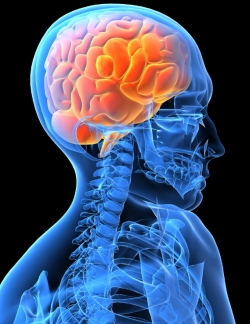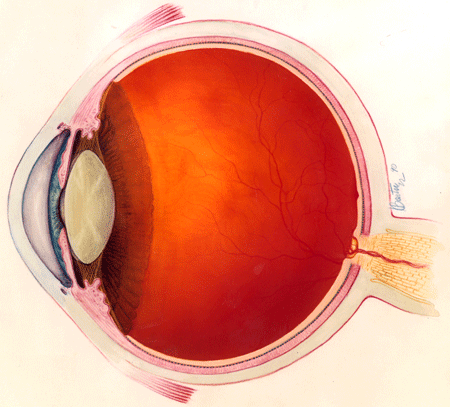Reverse Engineering the Brain
by Andrew Boyd
Today, we look to the brain. The University of Houston's College of Engineering presents this series about the machines that make our civilization run, and the people whose ingenuity created them.
One of the holy grails of science and engineering is creating a computational device that mimics the human brain. The reason's simple. The brain is capable of remarkable feats that today's computers can't come close to replicating.

It's not that the research community hasn't tried. The field of artificial intelligence sprang up shortly after computers made their way onto the scene. Armed with computational approaches like "fuzzy logic" and "swarm intelligence," researchers set off to lay hold of the power of human reasoning. But while there's been some progress, artificial intelligence hasn't come close to delivering on its early promise.
So attention has shifted from outdoing the brain to better understanding what the brain does in the first place. Researchers are now emphasizing reverse engineering the brain. The idea has even been put forward by the National Academy of Engineering as one of fourteen grand engineering challenges for the twenty-first century.
It sounds like a great idea. But sticky issues lurk just beneath the surface. Neurons. Axons. Synapses. We understand the physical makeup of the brain in great detail. We know that when the eyes see a crying baby they send signals to the brain that in turn set off a chain reaction of electrochemical pulses. But here's the million dollar question: how do those particular pulses (as opposed to all the other possible pulses) translate into the action "give the baby a bottle"?

Reverse engineering the brain is very different than reverse engineering, say, a computer chip. When a dubious competitor tears apart a chip, he can replicate it and put it to use. In the case of the brain, we can see what it's doing but we don't know how that translates into actual thinking. We can't put what we see to use.
Admittedly, reverse engineering the brain's a grand challenge for the entire twenty-first century, not just the first decade. And some of the early results are quite astonishing. Researchers at Cornell University have developed a prosthetic eye with surprisingly good vision. They've achieved this by understanding in detail the electrical signals sent by the eye's retina to the brain. A good analogy is a photocopier sending the image of a document to a computer. As long as the copier sends signals the computer understands, the computer doesn't care what make of copy machine is used. The Cornell researchers have effectively changed out the copy machine. What's amazing is that the right signals were teased from biological wetware, not mechanical hardware.

Of course, the eye is a far cry from the brain. An eye gathers information; the brain converts that information into thoughts and actions. So we still have a long way to go to on the road to reverse engineering the brain. Until then we'll just have to rely on the real thing, biologically engineered through the miracle of life.
I'm Andy Boyd at the University of Houston, where we're interested in the way inventive minds work.
(Theme music)
Notes and references:
S. Anthony. Scientists Reverse Engineer Animal Brains to create bionic prosthetic eyes. From the EXTREMETECH website: http://www.extremetech.com/extreme/134498-scientists-reverse-engineer-animal-brains-to-create-bionic-prosthetic-eyes. Accessed October 1, 2012.
S. Nirenberg and C. Pandarinath. Rational Prosthetic Strategy with the Capacity to Restore Normal Vision. From the website of the Proceedings of the National Academy of Sciences, Early Edition: http://physiology.med.cornell.edu/faculty/nirenberg/lab/papers/PNAS-2012-Nirenberg-1207035109.pdf. Accessed October 1, 2012.
Reverse-Engineer the Brain. From the National Academy of Engineering website: http://www.engineeringchallenges.org/cms/8996/9109.aspx. Accessed October 1, 2012.
The picture of the brain is from a website of the State of Idaho. The abstract picture of neurons is from the U.S. Centers for Disease Control. The picture of the eye is from the U.S. National Eye Institute.
This episode was first aired on October 4, 2012